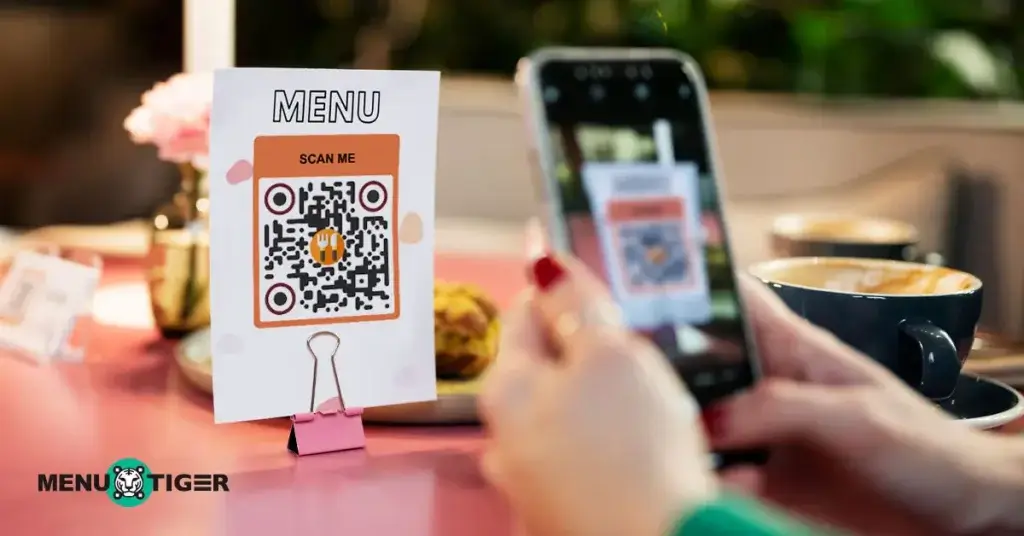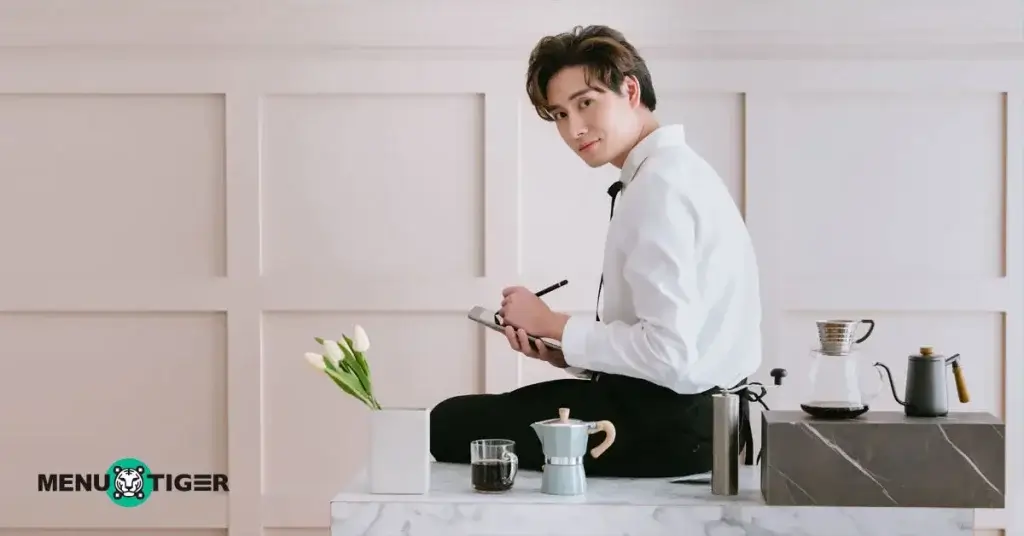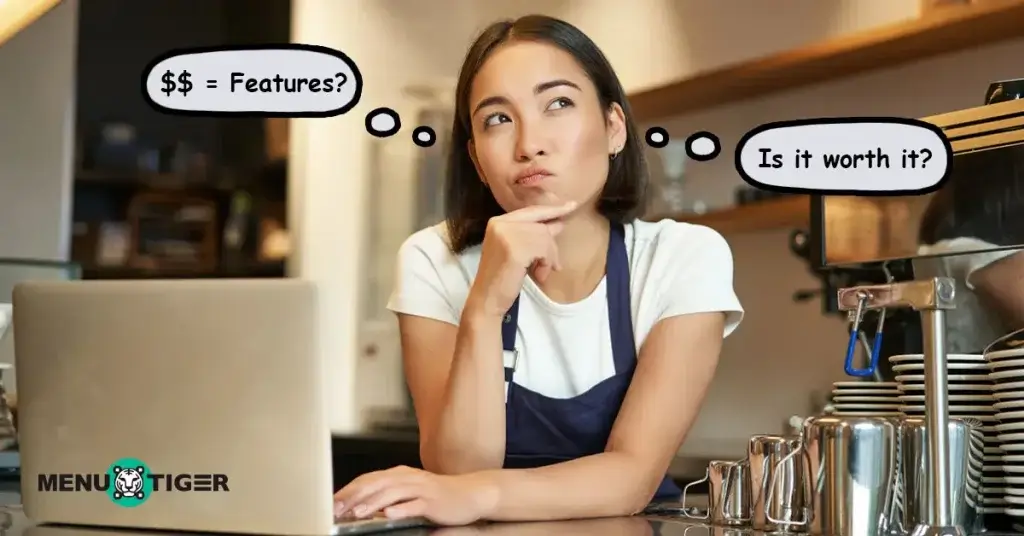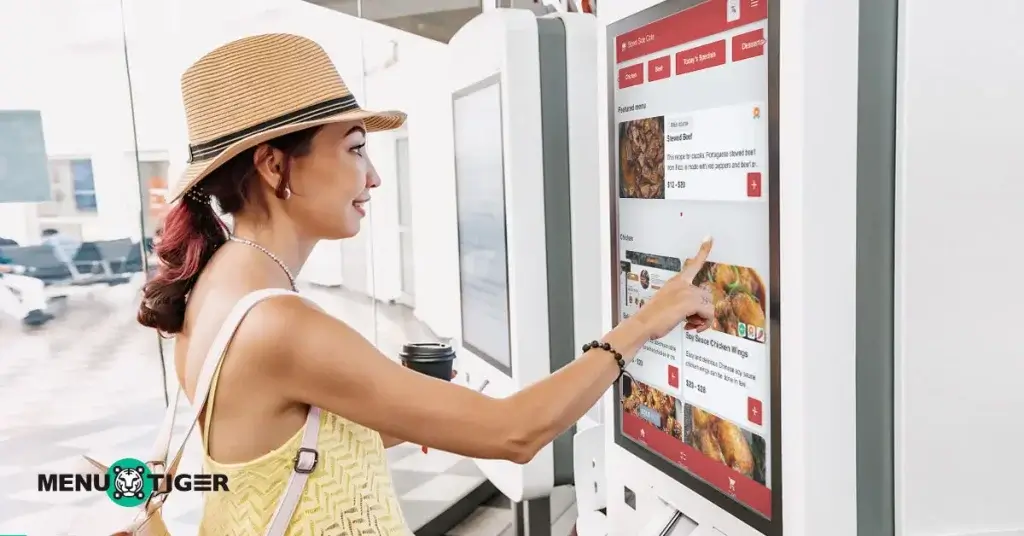Did you know that 71% of consumers prefer ordering directly from a restaurant’s website or mobile app rather than using third-party platforms?
Indeed, customer expectations are shifting, and traditional ordering systems are becoming inefficient.
Instead of relying on third-party apps that take a cut of your revenue, an in-house cafe ordering system can make a huge difference.
But how do you choose the right system? What features should you look for? And how can you implement it smoothly into your business?
This online menu ordering system guide will cover everything you need to help you make an informed decision for your cafe.
Table of Contents
ToggleDefinition and examples of a cafe ordering system
It is a digital solution that allows customers to browse the menu, place orders, and make payments using restaurant technology rather than traditional methods like counter service or waitstaff.
These systems help cafes improve the overall customer experience.
Here are some examples:
1. Smart menu QR code

Customers who know how to scan a menu QR code placed on tables, counters, or signage can easily access the cafe’s digital menu.
They can browse items, customize their orders, and complete payment—all from their smartphones.
This speeds up service, reduces human errors, and minimizes staff workload, making it ideal for cafes with limited personnel.
2. Self-service kiosks
A touchscreen self-service kiosk installed at the entrance or ordering station allows customers to place their orders independently.
These kiosks offer menu customization, provide visual confirmations, and include choices and add-ons to your online menu, reducing miscommunication and increasing upselling opportunities.
This option is especially useful for high-traffic cafes where long lines deter potential customers.
3. Mobile and online ordering
Many cafes now offer dedicated websites or mobile apps where customers can place their orders in advance for pickup or delivery.
This reduces congestion during peak hours and enhances customer convenience.
Additionally, businesses can integrate loyalty programs, promotional discounts, and personalized recommendations to boost sales.
4. Tabletop tablets
Some cafes equip tables with touchscreen tablets, so customers can browse the menu, place orders, and even request refills without flagging down a server.
This table ordering system improves efficiency and creates a more interactive and engaging dining experience.
5. POS-integrated systems
These combine digital ordering with a cafe’s point-of-sale system (POS), ensuring smooth transactions, real-time order tracking, and automatic inventory updates.
This setup benefits cafes by reducing manual work, minimizing order errors, and improving financial reporting.

How to choose the right online menu ordering system
Choosing one for your business can seem overwhelming with so many options available.
However, by evaluating your cafe’s specific needs, customer base, and business goals, you can make an informed decision.
Here are key factors to consider when selecting the best system for your cafe:
Assesses what your cafe needs

First, assess your cafe’s size, customer flow, and type of service.
For instance, a small coffee shop with a few tables may want to experience the benefits of QR code menu ordering system, while a larger, high-traffic cafe may require more robust options like self-service kiosks or mobile ordering.
Consider how much time and effort you can dedicate to system setup and maintenance as well.
Prioritizes user experience
The system you choose should provide an easy and intuitive experience for both customers and staff.
For customers, a clean, user-friendly interface is essential. For staff, the system should integrate seamlessly with your existing POS system for easy order processing.
Test the system yourself to see if it’s easy to navigate and it doesn’t create unnecessary friction for customers or employees.
Compatibility with your coffee shop system management
Consider how well the ordering system will integrate with your current tools, such as your POS system, inventory management, and payment processing.
A system that syncs with your POS can help you manage orders more effectively and give real-time updates on stock levels.
Some systems allow for loyalty programs and promotions, which can be easily integrated to encourage repeat customers.
Customization and flexibility that helps with your brand
The best ordering system should offer customization options that suits your unique menu and branding.
Look for systems that let you adjust items, update your QR code menu prices, and change the overall look of the interface.
The flexibility to add new menu items, update prices, or create special promotions on the fly can make a huge difference in your ability to stay agile in a fast-changing market.
Make sure it is mobile-friendly
Since most customers now prefer using their smartphones to place orders, make sure the cafe’s online ordering system is optimized for mobile viewing.
It should provide a smooth experience on any device when customers are ordering to keep them engaged, reduce errors, and increase the chances of them ordering from you again.
Customer support and maintenance reliability
Look for a system that offers reliable customer support and regular updates.
This is essential in case any technical issues arise or if you need assistance with system setup and troubleshooting.
Check whether the software provider offers 24/7 support, an online knowledge base like blogs, video tutorials, and phone assistance.
Find the right balance of cost and features

Be sure to understand the pricing model of the system.
Some systems charge a monthly fee, while others may require a one-time setup cost.
Be mindful of any additional transaction or commission fees, especially if the system is tied to a payment gateway or third-party platform.
Compare different systems to make sure you’re getting the best value for your investment, considering both short-term costs and long-term benefits.
Best practices for implementing a cafe online ordering system
Successfully adopting a new ordering system involves strategic implementation.
To make the most of your investment and have a smooth transition for both staff and customers, follow these proven best practices:
Start with staff training
Before launching any new system, make sure your team is comfortable using it.
Offer hands-on training sessions so staff members understand how to manage orders, update menus, handle customer inquiries, and troubleshoot basic issues.
A well-trained team makes for smoother operations and helps customers accept the new process with confidence.
Tell your customers about it
Introduce the system to customers in a way that feels natural and inviting.
Use signage, table tents, or counter displays to explain how it works and why it benefits them.
Your staff should be prepared to patiently guide customers through the process, answering questions and addressing any concerns.
Test before going live
Once you’re done setting up your coffee shop system management, test it during off-peak hours or soft launch it with a small group of customers.
This will help you identify some issues or technical glitches before they can impact your daily operations.
The feedback from your test group will be useful to fine-tune the system.
Monitor performance and customer feedback
Make sure to track order volumes, wait times, and customer satisfaction after implementing the system.
Many ordering systems come with analytics features to help you identify what’s working and where there’s room for improvement.
Also, ask for feedback from customers and staff since continuous input helps you adapt and improve the process.
Keep the system updated
Regularly update your digital menu QR code or printed menus to reflect seasonal offerings, price changes, or sold-out items.
Also, make sure the software itself is kept up to date to take advantage of new features, bug fixes, and security improvements.
Using automated penetration testing can help spot potential vulnerabilities early, keeping your system secure and reliable for customers.
And if you’re using a POS for small cafe operations, be sure it integrates well with your ordering system for more efficient day-to-day menu management.
How MENU TIGER can help you run a better cafe
Adopting a digital ordering system like MENU TIGER opens up several opportunities for cafes to improve their service, efficiency, and customer experience.
Let’s take a look at what it can do for your cafe.
Offer self-ordering kiosks as an ordering system

Set up tablet kiosks inside your cafe so customers can browse the menu and place orders without needing to queue at the counter.
This is especially helpful during peak hours when your staff is busy behind the bar.
It’s a simple way to speed up transactions while giving customers more control.
Boost sales with smart and visual menus
Digital menus that feature photos and enticing descriptions do more than inform—they persuade customers.
MENU TIGER lets you showcase high-margin items, create attractive combos, or highlight customer favorites.
When customers see what they’re ordering, they’re more likely to try something extra, increasing your average order value with minimal effort.
Enable contactless ordering via QR codes
A smart QR code menu allows dine-in customers to scan QR codes on the table and place their orders from their own devices.
This reduces the need for printed menus or extended interactions, making service feel more modern and efficient—great for busy brunch cafes or casual settings.
Keep your menu fresh and up-to-date
MENU TIGER helps you update your menu in real-time.
When a dish sells out or a new seasonal drink drops, you can update your digital menu instantly from the dashboard.
Customers always see what’s available, reducing confusion and disappointment.
You can also feature limited-time offers with eye-catching visibility—great for testing new items or promoting daily specials.
Multi-branch management from a single dashboard
If you own more than one café, MENU TIGER makes it easy to manage them all from a single dashboard.
You can customize menus per location, run promotions, and track performance without needing to hop between systems—saving you time and keeping your branding consistent.

Achieve headache-free cafe management with a centralized online ordering system
Keeping up with modern customer expectations doesn’t have to be overwhelming.
With the right cafe ordering system, you can simplify your ordering process to reduce stress during peak hours and provide a smoother experience from start to finish.
A digital menu ordering system like MENU TIGER offers practical solutions designed to support your cafe’s unique needs, such as updating menus on the fly, managing multiple locations, or offering menu QR codes and kiosk ordering.
When you’re ready to modernize without the fuss, MENU TIGER is here to help.
FAQs
An ordering system for cafes is a digital setup that helps manage how customers place their orders.
It can include tools like tablets, mobile apps, or self-service kiosks that make the ordering process faster and more efficient for both staff and customers.
Many systems are also connected to the kitchen, inventory, and payment tools to keep everything running smoothly behind the scenes.
A POS system for a cafe is where orders are processed and payments are handled.
It’s typically a mix of hardware and software that helps manage sales, track inventory, and even pull reports for business insights.
For cafes, a good POS system also supports features like menu customization, split billing, and integration with online orders.
In most cafes, you’ll see these three common types of ordering:
1. In-person ordering
Customers place their order at the counter or with a staff member.
2. Online ordering
Customers use the cafe’s website or app to order ahead for pickup or delivery.
3. Table-side ordering
Customers order from their table, often by scanning a QR code or using a tablet provided by the cafe.
Here are the main types of purchase orders businesses use when buying supplies:
1. Standard Purchase Order
A one-time order with fixed details like quantity, price, and delivery date.
2. Planned Purchase Order
Used when the order will be placed in the future, based on estimated needs.
3. Blanket Purchase Order
An agreement to buy multiple deliveries of the same item over time, often at a locked-in price.
4. Contract Purchase Order
A formal contract with agreed terms, often used for ongoing or larger-scale purchases.





